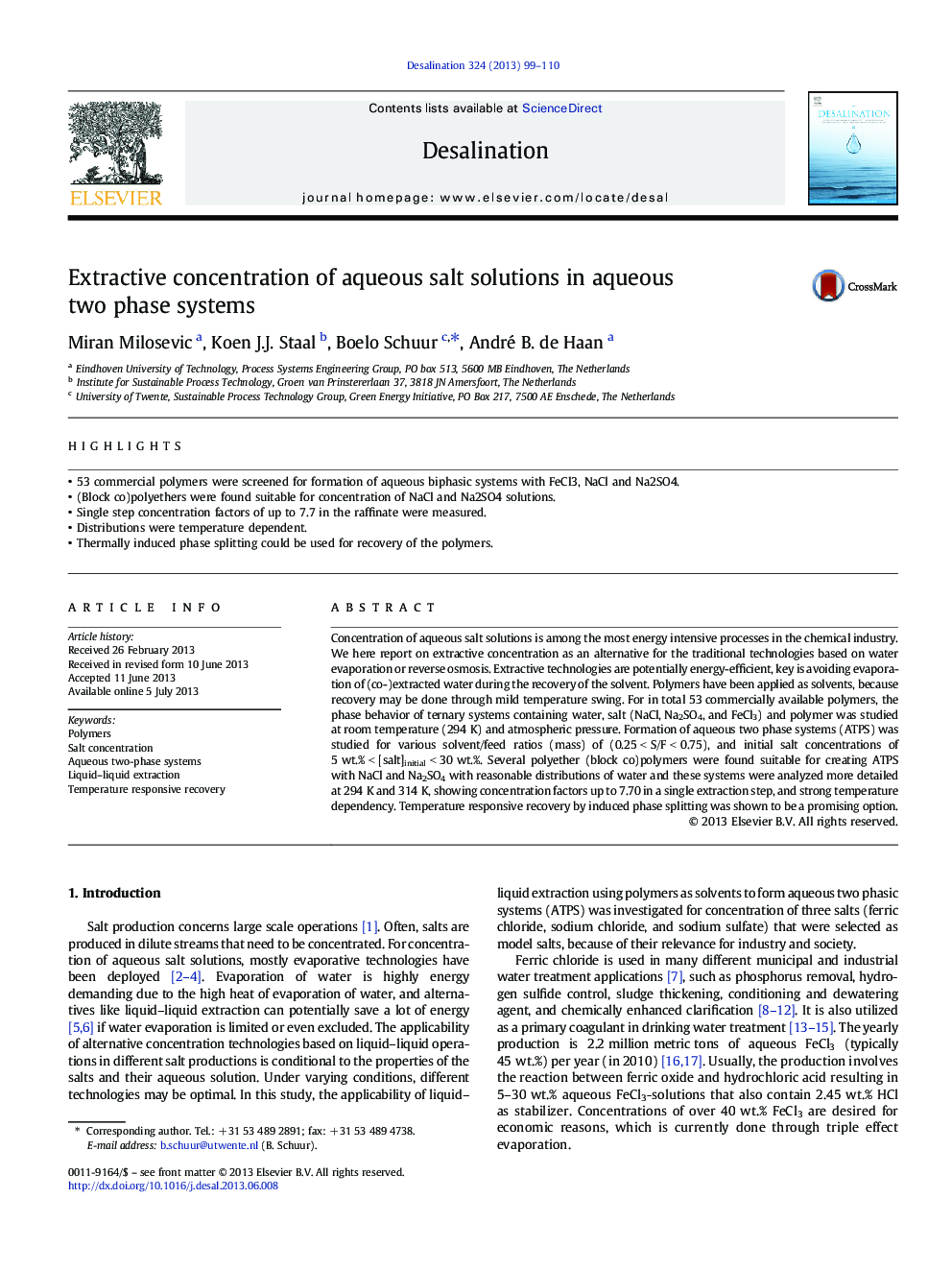| Article ID | Journal | Published Year | Pages | File Type |
|---|---|---|---|---|
| 7008667 | Desalination | 2013 | 12 Pages |
Abstract
Concentration of aqueous salt solutions is among the most energy intensive processes in the chemical industry. We here report on extractive concentration as an alternative for the traditional technologies based on water evaporation or reverse osmosis. Extractive technologies are potentially energy-efficient, key is avoiding evaporation of (co-)extracted water during the recovery of the solvent. Polymers have been applied as solvents, because recovery may be done through mild temperature swing. For in total 53 commercially available polymers, the phase behavior of ternary systems containing water, salt (NaCl, Na2SO4, and FeCl3) and polymer was studied at room temperature (294 K) and atmospheric pressure. Formation of aqueous two phase systems (ATPS) was studied for various solvent/feed ratios (mass) of (0.25 < S/F < 0.75), and initial salt concentrations of 5 wt.% < [salt]initial < 30 wt.%. Several polyether (block co)polymers were found suitable for creating ATPS with NaCl and Na2SO4 with reasonable distributions of water and these systems were analyzed more detailed at 294 K and 314 K, showing concentration factors up to 7.70 in a single extraction step, and strong temperature dependency. Temperature responsive recovery by induced phase splitting was shown to be a promising option.
Related Topics
Physical Sciences and Engineering
Chemical Engineering
Filtration and Separation
Authors
Miran Milosevic, Koen J.J. Staal, Boelo Schuur, André B. de Haan,
